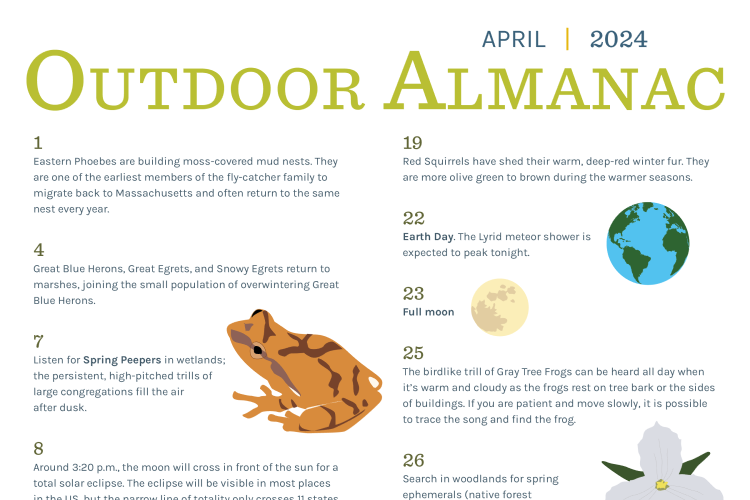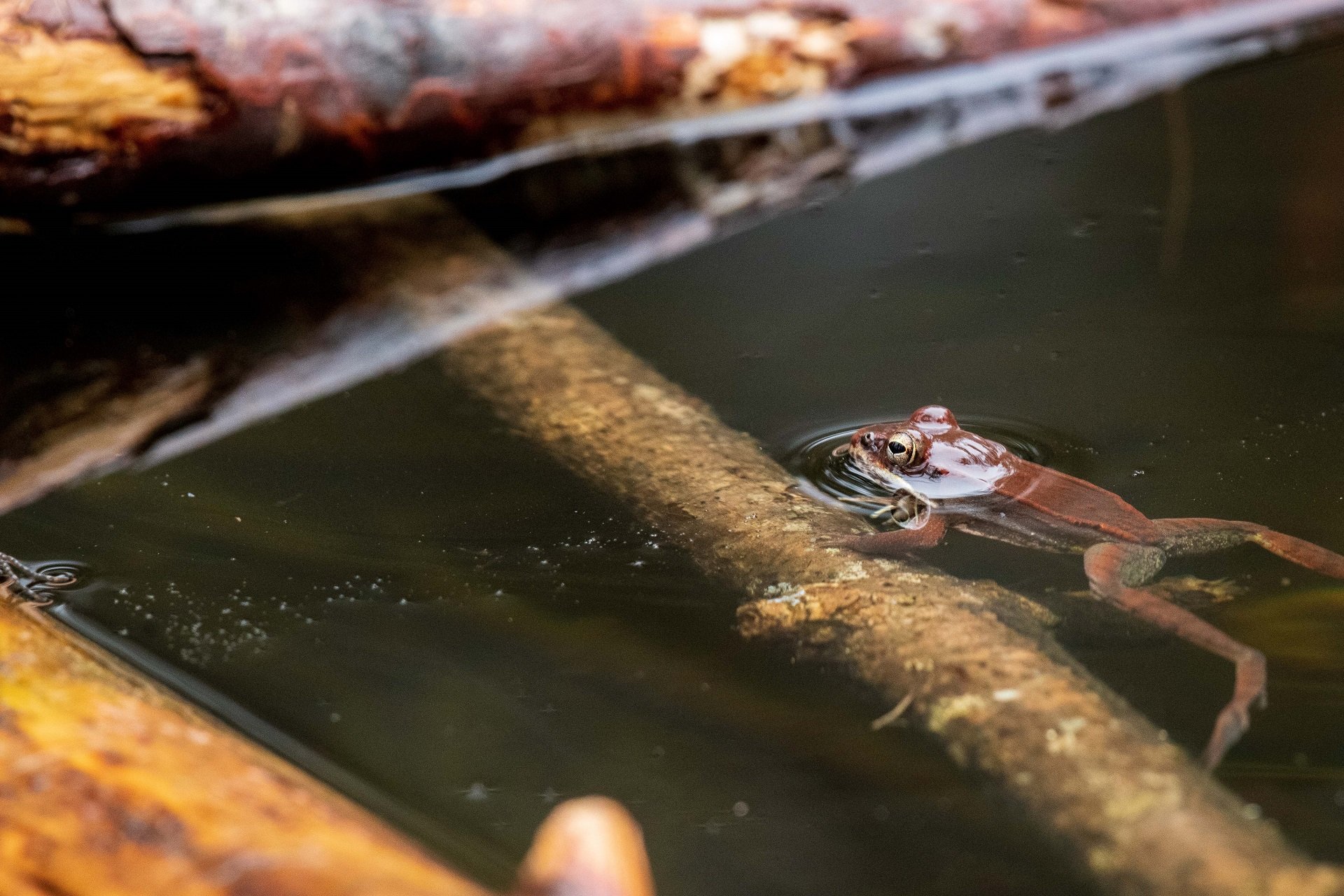Outdoor Almanac
As the earth awakens from its winter slumber, each day in April brings new signs of life. Look for the industrious Eastern Phoebes as they meticulously build their moss-covered mud nests. Listen closely for an enchanting chorus of Spring Peepers in wetlands. Search for wildflowers in woodlands like trout lily, trillium, bloodroot, trailing arbutus, and hepatica. On April 8, we'll be treated to a rare celestial occurrence: 90% totality of the solar eclipse.
What will you discover this April?
Visit a nearby sanctuary or join us for a program to experience the best of April.

Outdoor Almanac
Download or print this month's outdoor almanac.
April
1
Eastern Phoebes are building moss-covered mud nests. They are one of the earliest members of the fly-catcher family to migrate back to Massachusetts and often return to the same nest every year.
4
Great Blue Herons, Great Egrets, and Snowy Egrets return to marshes, joining the small population of overwintering Great Blue Herons.
7
Listen for Spring Peepers in wetlands; the persistent, high-pitched trills of large congregations fill the air after dusk.
8
Around 3:20 p.m., the moon will cross in front of the sun for a total solar eclipse. The eclipse will be visible in most places in the US, but the narrow line of totality only crosses 11 states, including Vermont and New Hampshire.
10
Mourning Cloak butterflies overwinter as adults, sheltered under loose bark or in holes in trees. They emerge in spring before most flowers are open, so they feed on sap from deciduous trees and can also be found sipping on puddles in dirt paths and roads.
12
It’s breeding season for Eastern Musk Turtles, also known as “stinkpots.” This elusive reptile is nocturnal but can sometimes be seen basking in the sun on logs and vegetation in still waters.
14
Eastern shadbush, also called serviceberry, blooms in wetlands and moist woodlands, creating clouds of white blossoms along riverbanks.
19
Red Squirrels have shed their warm, deep-red winter fur. They are more olive green to brown during the warmer seasons.
22
Earth Day. The Lyrid meteor shower is expected to peak tonight.
23
Full moon.
25
The birdlike trill of Gray Tree Frogs can be heard all day when it’s warm and cloudy as the frogs rest on tree bark or the sides of buildings. If you are patient and move slowly, it is possible to trace the song and find the frog.
26
Search in woodlands for spring ephemerals (native forest perennials that bloom before the leaves on the trees come out), such as trout lily, trillium, bloodroot, trailing arbutus, and hepatica.
27
Ferns emerge from the ground tightly wound like the scroll on the end of a fiddle, earning them the nickname “fiddleheads.”
30
Watch for Ruby-throated Hummingbirds. Early returning hummingbirds often feed from sap wells made by Yellow-bellied Sapsuckers. If you plan to put out a hummingbird feeder, it is time to start.
Upcoming Programs this Month
See MoreWednesday Morning Birding
-
Newburyport and vicinity
-
Wednesday, April 24
9:30am-12:30pm
Adults
Wednesday Walks at Tidmarsh
-
Tidmarsh Wildlife Sanctuary, Plymouth
-
Wednesday, April 24
10:00-11:30am
Adults & Families - 0 & up
Preschool Story & Nature Hour - Worms
-
Wachusett Meadow Wildlife Sanctuary, Princeton
-
Wednesday, April 24
10:30-11:30am
Families - children 2.5 - 5 years
Birding by Ear at Wompatuck State Park
-
Thursday, April 25
8:00-10:30am
Adults
All Family Field Trip: Nature's Builders
-
Thursday, April 25
10:00am-12:00pm
Families - children 4 - 11 years
Homeschool - Ecologists: Shades of Green
-
Broad Meadow Brook Conservation Center and Wildlife Sanctuary, Worcester
-
Thursday, April 25
1:00-3:00pm
Age 12 - 16
Stay Connected
Don't miss a beat on all the ways you can get outdoors, celebrate nature, and get involved.



